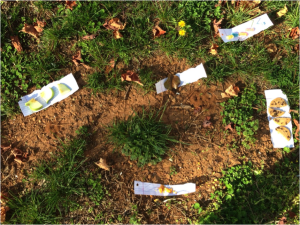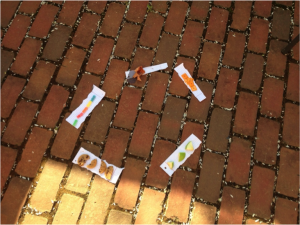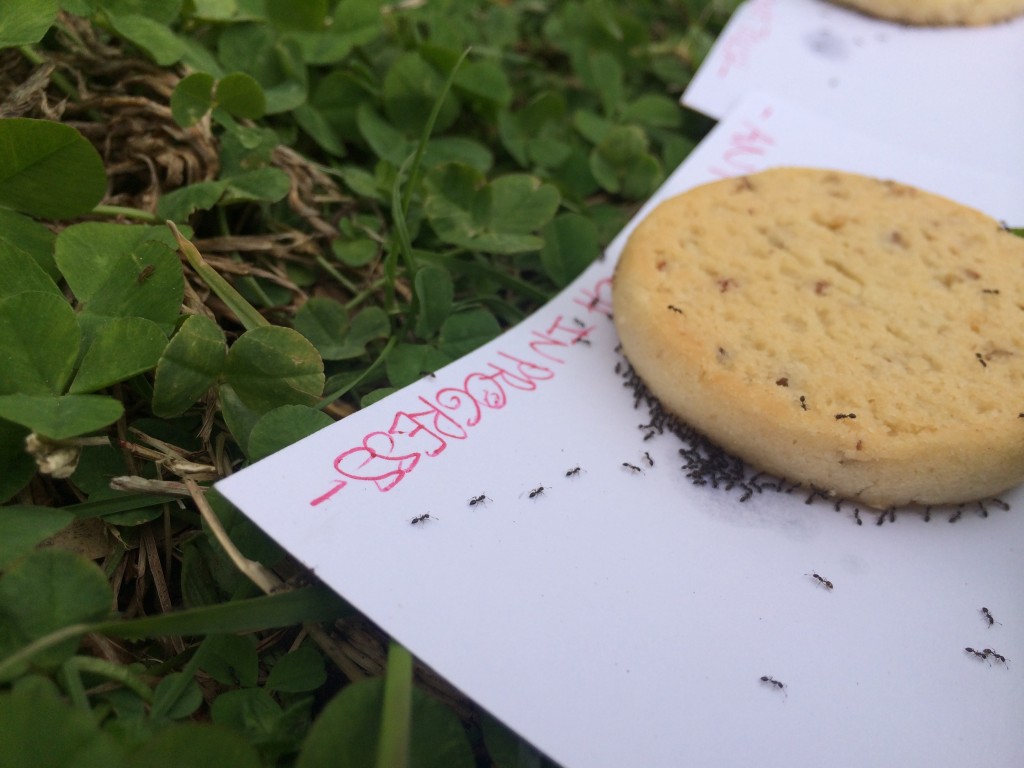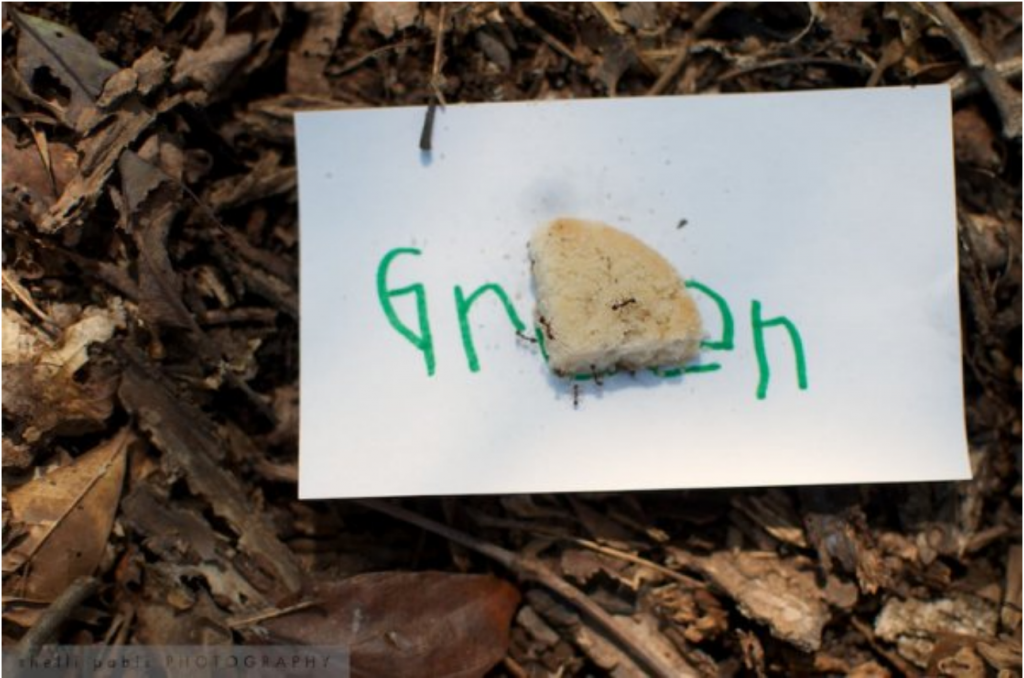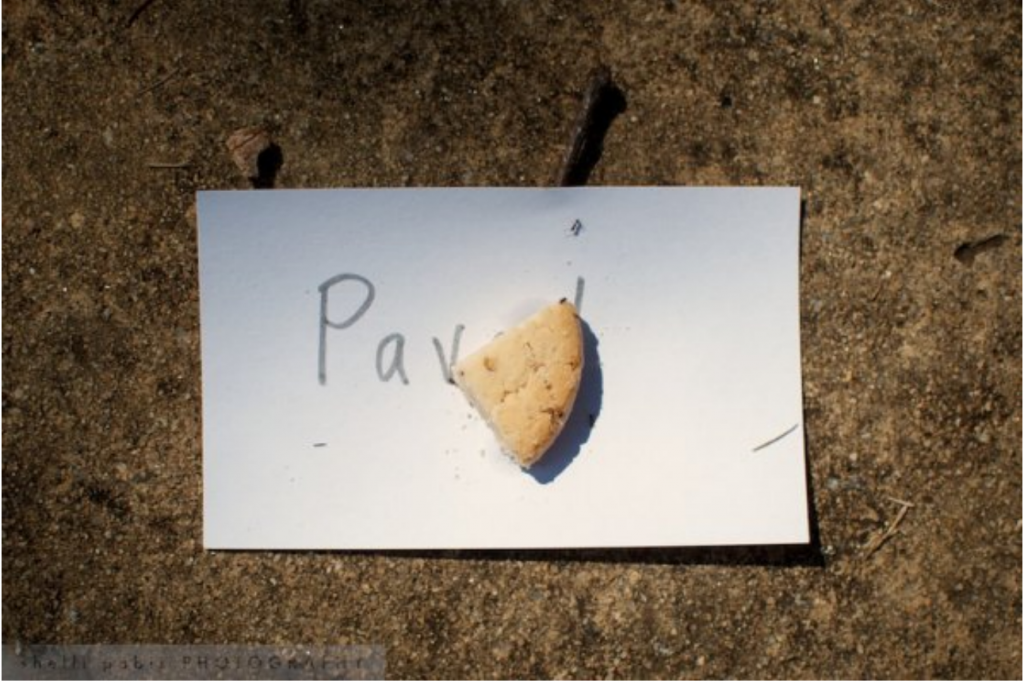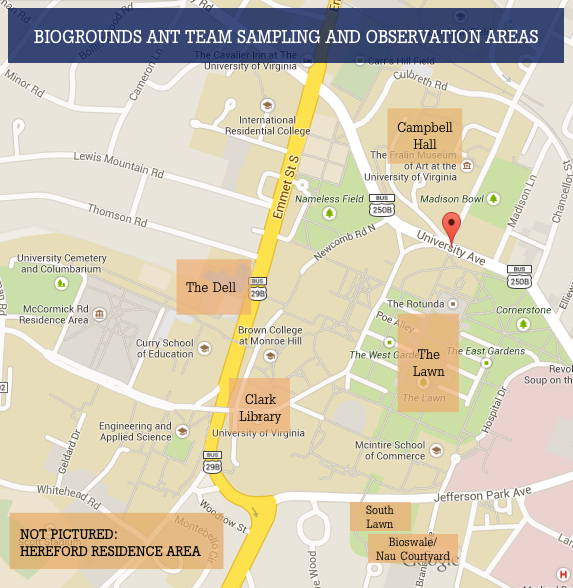After a long winter the sun came out from its hiding place at last and along with it brought the nature back to life. It’s officially spring time and the trees are blooming with beautiful flowers, birds are singing their songs all around Grounds and the hard workers of the underground world, ants are waking up.
With the warm weather on Sunday, it was the perfect opportunity for us as the ants team to get out and observe some ants. Jenny and I were packed with food and ready to start our experiment at the Architecture School right in front of the Fine Arts Café. As it has been stated in the earlier blog posts the aim of this experiment is to see what kinds of foods ants are attracted to and how different settings (man-made vs. natural) affect their behaviors.
Methodology:
With a gourmet selection of foods such as Cheezits, apples, olive oil, Sour Patch Kids and chocolate chip cookies we start preparing the food for our little customers.
Inspired from Amy Savage’s talk in our class, we decided to create two stations: one being on the grass under a tree, the other one being on the brick path in between the tables and chairs of the Fine Arts Café. To our luck the spot that we set our foods under the tree had two ant nests right next to each other!
Our station on the grass had two ant nests right in the middle of it.
Our station that was on the brick path.
Expectations and Findings:
We chose to set up all the foods that we had around the nests as shown to minimize the differences in distance between each. Then we waited for ants to show up! We expected to see that the grass station would get more ants in total and that apple slices and the olive oil would get the most attention in both stations. Here’s what we found after 2 hours:
- Out of all the foods that we had, chocolate chip cookies got the first place, while Cheezits and apples followed being in the second and third places respectively.
- Brick path station got 1-2 ants in total while the grass station had tens of ants on various different foods.
- We saw that the ants were struggling with bigger food such as the apple slices versus Cheezits crumbs.
Chocolate chip cookies were the favorite.
Some of the ants really enjoyed Cheezit crumbs.
Explanation of findings:
There is a few explanations for why our expectations did not meet the reality. First of all, like it was stated above, our apple slices were not appropriate for ants to easily pick up and transport. My guess is that the apple slices initially got more attention than the cookies or the Cheezits; however, when unable to pick up bits easily off of the slices, the ants picked the easier to transport options of cookies and Cheezits. Although the cookies were not crumbled, they are softer than the apples and thus easier to break in to pieces.
We used leaves as holders for our olive oil samples. Although ants love oils according to Amy Savage our samples did not really attract a lot of ants. We saw that a couple of ants were dead in the oil that leaked out of the leaf. The leaf could have also absorbed most of the oil making it impossible for ants to eat it.
The different ant counts between the stations can be simply explained by the distance and level. Our brick station was at a lower level than the grass setting, away from the nests and was harder for our little friends to get to. My guess is that only a few ants stopped by in passing at the brick station and therefore we did not really observe any of them on the food.
Reflection:
I really enjoyed this experience as a whole. I have come to realize how we forget about all the different species that are living above, on and below the ground. We are surrounded by nature all the time and all we have to do is realize and appreciate it. It is a reminder that even the smallest things such as how we design our food or landscape may affect our little friends in the biggest ways.
Post by E. Berke Tezcan, Civil & Environmental Engineering ‘16

